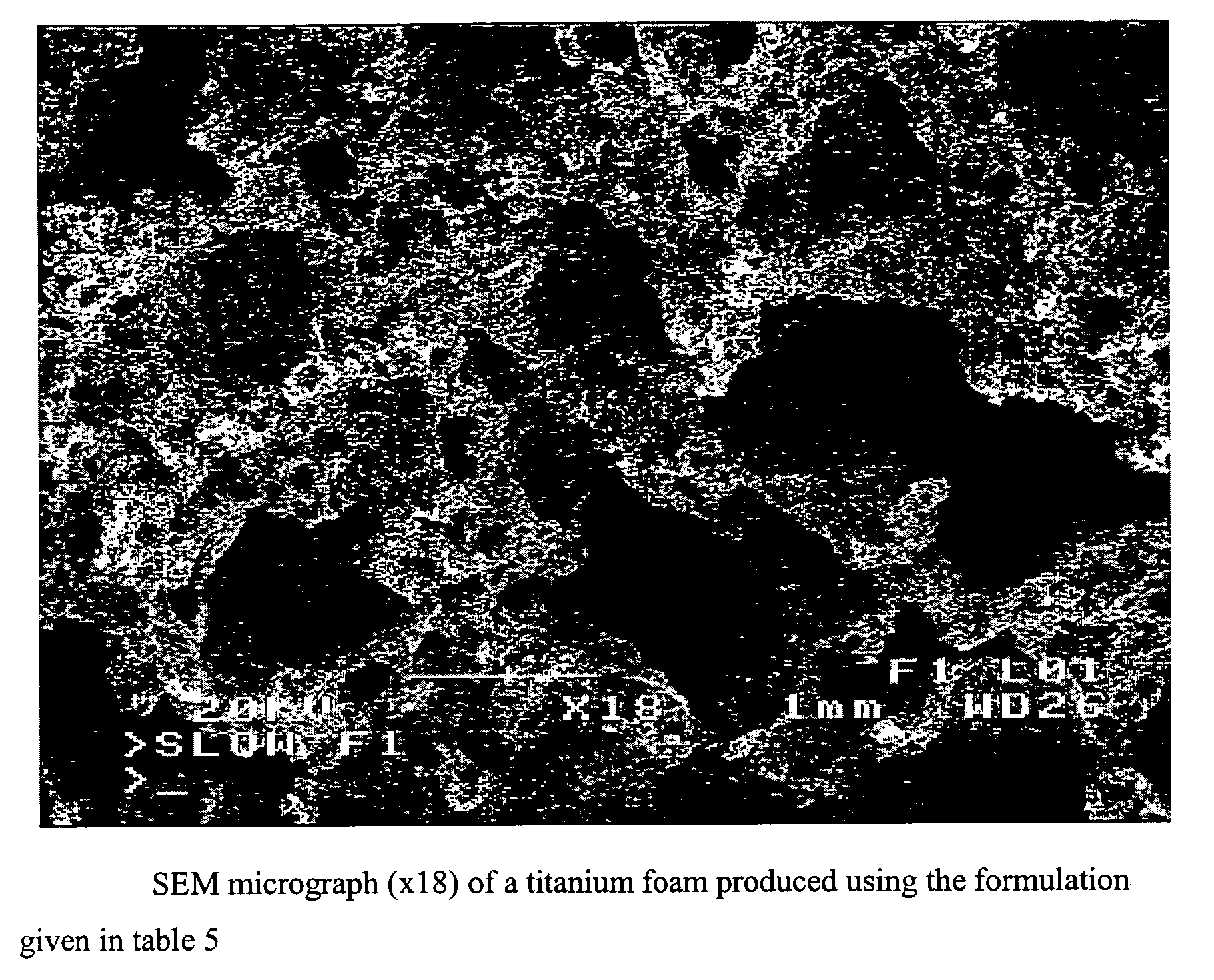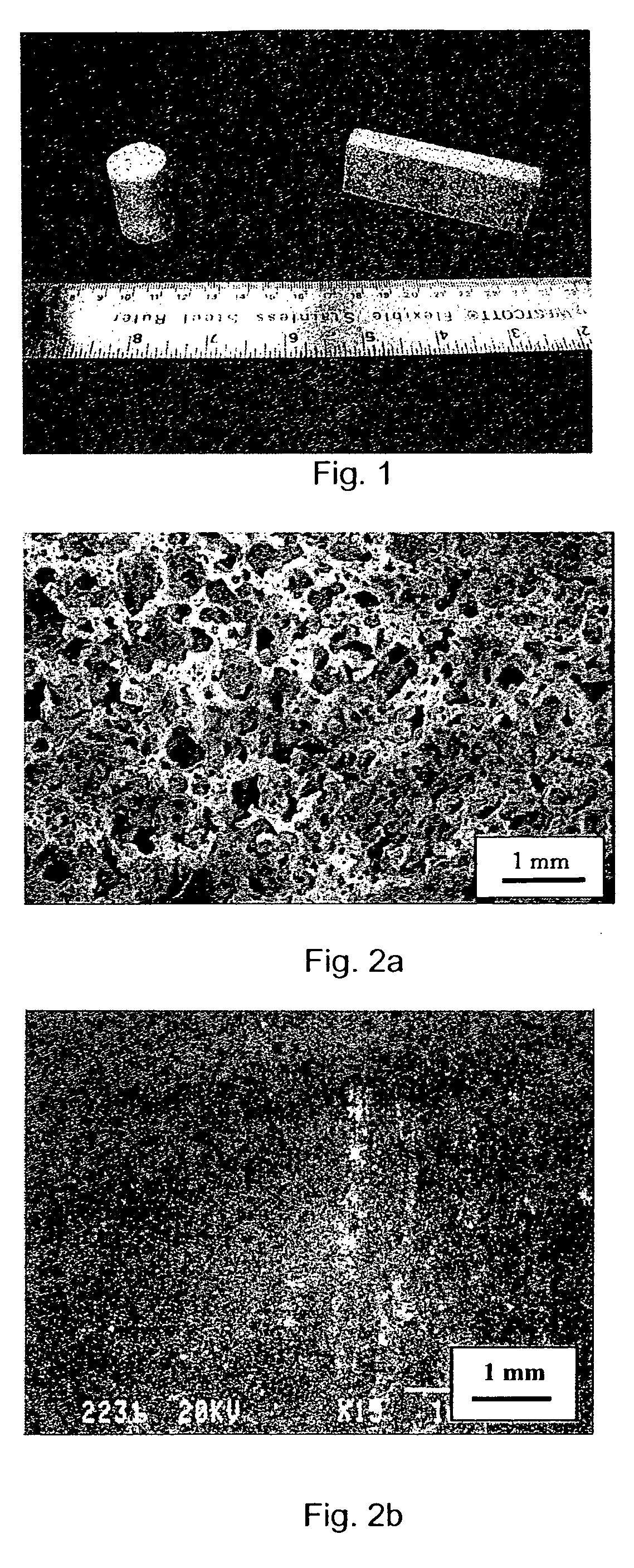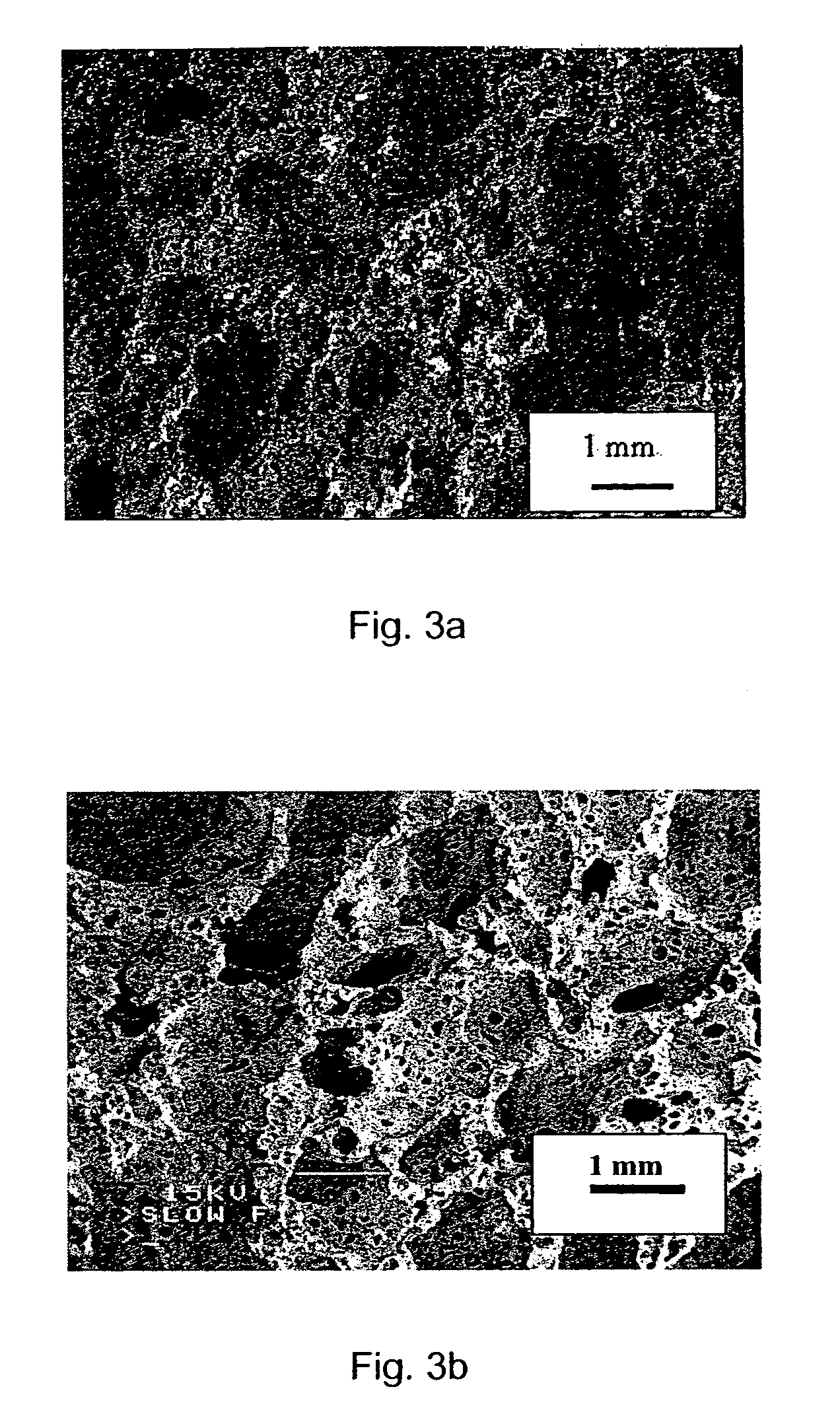Method of making open cell material
a technology of open cell material and ceramics, which is applied in the field of porous materials, can solve the problems of unsuitable foaming of powder, and achieve the effect of convenient flow
- Summary
- Abstract
- Description
- Claims
- Application Information
AI Technical Summary
Benefits of technology
Problems solved by technology
Method used
Image
Examples
example 1
[0064] Ni foams were produced with the formulation presented in Table 1. The different constituents were dry-mixed together. After mixing, the powder was poured into a mold and foamed at 150° C. in air. After foaming, the material was submitted to the debinding step in a tube furnace at 500° C. for 4 h in a dry air stream. Finally, the specimens were sintered in Ar-10% H2 for 2 h at 750° C.
TABLE 1Formulation used for the fabrication of the Ni foams.MetallicFoaming agentPowderBinderP-toluene sulfonylNi powderPhenolic resinhydrazide70.18 wt. %29.32 wt. %0.5 wt. %
[0065]FIG. 1 shows machined specimens obtained with the formulation of Table 1. The specimens were machined from plates and tubes after sintering. Table 2 shows that the density of the foamed material is significantly smaller than that of a material obtained by loose sintering without using binder and foaming agent. The density of the foam is almost 10 times smaller than that of pure solid nickel.
TABLE 2Density of a Ni foa...
example 2
[0067] Foams were produced with the formulations presented in Table 3, using the procedure described in Example 1. Depending on the formulation, it is possible to produce different materials. The microstructure of copper and iron foams is presented in FIGS. 3a and 3b. It is also possible to modify the microstructure of the material by modifying the mixture composition. Another way to modify the structure and properties of the material is to modify the foaming process parameters. In fact, the microstructure of a material foamed at 190° C. with the formulation given in Table 1 is presented in FIG. 4. The pore size of the material foamed at 190° C. is significantly larger than that of the material foamed at 150° C. (FIG. 2a).
TABLE 3Formulations used for the fabrication of different metallic foams ofExample 2.MetallicFoaming agentPowderBinderP-toluene sulfonylPowderPhenolic resinhydrazide 75 wt. % Ni24.25 wt. %0.75 wt. %70.18 wt. % Cu29.32 wt. % 0.5 wt. %70.18 wt. % Fe29.32 wt. % 0.5...
example 3
[0068] Ni foams were produced with the formulation presented in Table 3 using a thermoplastic binder. The different constituents were dry-mixed together. After mixing, the powder mixture was poured into a mold, compressed to a density of 2.28 g / cm3 and heated at 180° C. in air to melt the binder and induce the foaming. The foamed material was further submitted to the debinding step in a tube furnace at 500° C. for 4 h in a dry air stream. Finally, the specimens were sintered in Ar-10% H2 for 2 h at 750° C.
TABLE 4Formulation used for the fabrication of the Ni foams.MetallicBinderFoaming agentPowderPolyethylenep,p′-oxybis (benzeneNi powderpowdersulfonyl hydrazide)79.5 wt. %18 wt. %2.5 wt. %
[0069]FIG. 4 presents a section of a specimen obtained with the formulation of Table 4. The material has maintained its porous structure after sintering. It is highly porous and has three level of porosity. The porosity is interconnected. This porous material has a sintered density of 1.55 g / cm3. ...
PUM
| Property | Measurement | Unit |
|---|---|---|
| Temperature | aaaaa | aaaaa |
| Temperature | aaaaa | aaaaa |
| Temperature | aaaaa | aaaaa |
Abstract
Description
Claims
Application Information
 Login to View More
Login to View More - R&D
- Intellectual Property
- Life Sciences
- Materials
- Tech Scout
- Unparalleled Data Quality
- Higher Quality Content
- 60% Fewer Hallucinations
Browse by: Latest US Patents, China's latest patents, Technical Efficacy Thesaurus, Application Domain, Technology Topic, Popular Technical Reports.
© 2025 PatSnap. All rights reserved.Legal|Privacy policy|Modern Slavery Act Transparency Statement|Sitemap|About US| Contact US: help@patsnap.com



